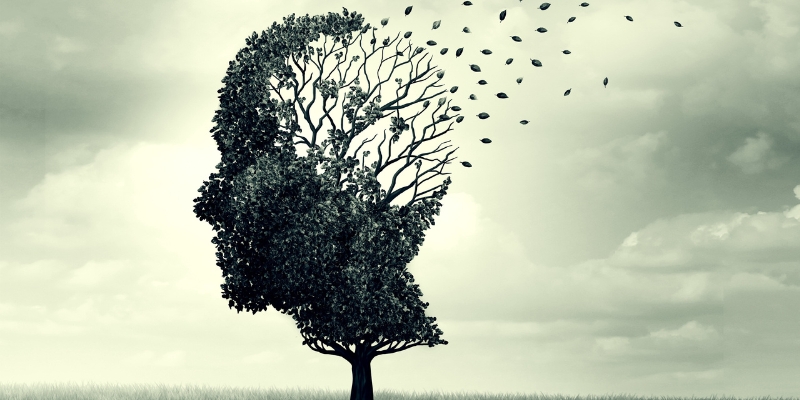In his farewell address of January 1989, President Reagan struck sunny chords of optimism. There was much to celebrate, much to look forward to. The Cold War was approaching its end and America had won. The tide of freedom was swelling. “Countries across the globe are turning to free markets and free speech and turning away from the ideologies of the past”, he proclaimed. Meanwhile, the US was “more prosperous, more secure, and happier” than it had ever been. Its promise as a “shining city on a hill” remained intact.
Why, then, were so many Americans apparently so angry as the next decade approached? It was, as John Ganz shows in his masterly new book, When the Clock Broke, because Reagan’s buoyancy hid uglier realities. The nation was in fact growing more divided in nearly every sense. This was clearest in the economic realm. The restructuring of American capitalism under Reagan’s leadership had generated vast wealth, but only for the wealthiest Americans. Beneath the glitz of new glass-and-steel skyscrapers, most had lost ground as wages stagnated, debt sky-rocketed and social services shrivelled.
In white middle America a revolt was brewing, and radical right-wing leaders were keen to seize on it. “For them”, Ganz writes, “the 1980s represented a betrayal.” They despaired over the apparent loss of the nation’s “traditions, substance, and racial purity”. And they envisioned, and sought to bring about, a “negative solidarity”. Only by “opposing domestic enemies” could the US regain its “coherence and meaning”. Ganz writes with the present in mind. For him the first election of Donald Trump in 2016 signalled the crystallization of this “politics of national despair”. And now that this politics has further solidified following last week’s sweeping Republican victory, we might turn back to this earlier era of transition and disruption in order more fully to understand it. With an eye to Antonio Gramsci’s notion of a “crisis of hegemony”, Ganz sees the 1990s as an interregnum in which an inchoate set of forces and beliefs, blending old and new, began to take shape, their proponents yearning for a different order. In other words, Trump’s rise and rise is not the result of some old and ingrained tendency in American conservatism or, for that matter, American society. Rather, it stems from the post-Reagan revolt within the American right.
Throughout his book Ganz spotlights the rage and rancour that spread beneath the surface of American life in a period now remembered for its peace and prosperity. He reminds us of how the political campaigns of David Duke, the charismatic former Ku Klux Klan leader who held a seat in the Louisiana House of Representatives between 1989 and 1993, while ultimately unsuccessful on a national stage, nevertheless gained mass appeal. Duke channelled old-fashioned racism and antisemitism into a broader assault on entrenched power, centralized government and neoliberal economics. He branded himself a populist, aiming to “swing the pendulum back” in favour of the white working and middle classes.
As Duke tapped into economic and racial grievances, the emerging talk-radio star Rush Limbaugh peddled anti-government conspiracy theories to millions of listeners, warning of black helicopters swooping down from the sky to terrorize freedom-loving citizens. Such claims might have seemed outlandish, but events had a way of making them real. In 1992, at the white separatist Randy Weaver’s isolated mountain home in Ruby Ridge, Idaho, a raid by federal agents, following a stand-off, killed Weaver’s wife and fourteen-year-old son. (Weaver survived.) The siege was a national scandal, convincing many that the government was indeed an oppressive force. It also catapulted the burgeoning right-wing militia movement into the public eye, which helped to draw in new acolytes.
In New York, also in 1992, the trial of the mobster John Gotti turned him into a kind of folk hero. Gotti was convicted of five counts of murder, but many saw him as an icon. As the author recounts, “the institutions had failed, the welfare state had failed, the markets had failed, there was no justice, just rackets and mobs”. In this context Gotti was a “symbol of order, the old order that many longed for still, an order more real and deeper than the law, upheld by brute power”.
These events, dynamics and controversies frame Ganz’s treatment of the 1992 presidential election, which marked the best performance in almost a century by a third-party candidate: Ross Perot. The eccentric billionaire Texas tech mogul, who had built his wealth servicing government healthcare contracts, harnessed the anti-government resentment building across the nation in a manner later to be emulated, and then some, by Trump. Perot secured 18.9 per cent of the vote. Many of his supporters were fanatical, viewing him as their only hope of recovering the America they felt had been lost to the staid two-party system and unresponsive state bureaucracies. His politics married unrestrained individualism and corporate worship, forging a potent movement that outlasted his candidacy.
Within the Republican Party, Pat Buchanan mounted his own campaign to unseat the incumbent president, George H. W. Bush. Declaring his candidacy, Buchanan targeted the establishment in Washington, summoning “the people of this country to recapture our capital city from an occupying army of lobbyists and registered agents of foreign powers hired to look out for everybody and everything except the national interest of the United States”. He claimed to speak for those who had been left behind by the supposed boom time of the Reagan years, calling for protectionist policies to defend American jobs from foreign competitors such as Japan. Equally important was his focus on culture. The forgotten Americans, Buchanan insisted, were losing their values and traditions. He promised that his “new nationalism” would not only put “America first”, but also ensure that “our Western heritage is going to be handed down to future generations, not dumped onto some landfill called multi-culturalism”.
Buchanan cribbed his playbook from two intellectuals who had become disillusioned with the conservative mainstream. The first was Sam Francis, a curmudgeonly columnist at the conservative Washington Times, who outlined a strategy to mobilize what he called “Middle American Radicals”. These “victims”, betrayed by Reaganomics and marginalized in the new, multicultural America, were not conservative in a sociopolitical sense. Rather, they were “revolutionary”. To reach them Francis advocated “a radical, antiestablishment approach” that would unseat entrenched interests in the nation’s centres of power. Yet he also argued for the government to play a continued role in aiding the elderly, subsidizing infrastructure, bolstering borders, protecting American jobs and combating foreign imports. This could be achieved through a “populist-based presidency able to cut through the present oligarchical establishment”, which Francis condemned as a “parasitical tumor on the American body”.
Buchanan’s other muse was Murray Rothbard, a libertarian economist who, with funding from the conservative billionaire Charles Koch, helped to found the Cato Institute think tank. Like Francis, Rothbard felt cast off from the conservative establishment. And, like Francis, he identified the radical and populist tendencies brewing in middle America. He too wanted to bring forth a new “right-wing populism”. With a proper leader, Rothbard declared in a speech in 1992, this movement “could short-circuit the media elites, and reach and rouse the masses directly”. The right just needed someone sufficiently “exciting, dynamic, tough, and confrontational”; it needed “the leadership of Patrick J. Buchanan”. With him, “we shall break the clock of social democracy”, thundered Rothbard. “We shall repeal the twentieth century.” When he finished his speech the crowd erupted. One attendee recalled that “people leapt to their feet, cheering wildly, ready to storm the capital”.
Buchanan and Perot, Rothbard and Francis, Duke and Limbaugh – each grasped and helped to guide the politics of resentment bubbling up across the country. They glimpsed the future, even if they were unable to manifest it themselves. Perot, despite his strong showing, never came close to winning the election. Buchanan ultimately gave up his bid for the Republican nomination, urging his supporters to carry the torch of radicalism into Bush’s camp. Bush, of course, lost to the Democrat Bill Clinton, who himself faced insurgent forces within his party. But Clinton managed to co-opt and contain those on the left calling for more inclusionist and redistributive policies. He also managed to ride the broader wave of discontent into the White House, even as he continued, as John Ganz notes, “many of the same Reaganite policies that contributed to the crisis in the first place”. Under Clinton’s leadership the crisis grew and, with it, the sense of resentment and alienation that had propelled the nascent right-wing populism of the early 1990s. Thirty years on, and with Trump now looking forward to a second, consolidating term, it is growing ever stronger.
Kyle Burke is Assistant Professor of History at the University of South Florida and the author of Revolutionaries for the Right: Anticommunist internationalism and paramilitary warfare in the Cold War, 2018
The post Right turn appeared first on TLS.

 By Times Literary Supplement | Created at 2024-11-14 02:17:54 | Updated at 2024-11-21 14:53:10
1 week ago
By Times Literary Supplement | Created at 2024-11-14 02:17:54 | Updated at 2024-11-21 14:53:10
1 week ago








